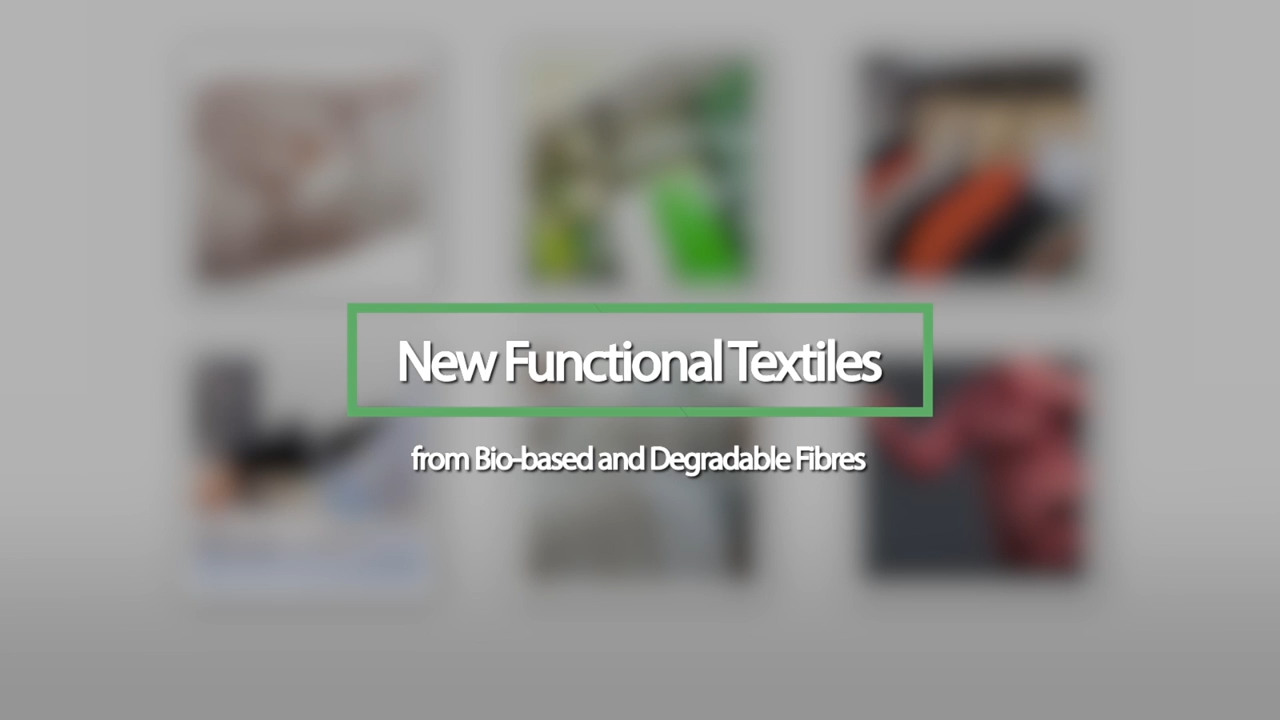New Functional Green Textiles from Bio-based and Degradable Fibres
This project aims to extend the applications of bio-based and eco-friendly polymers and fibres to "green" textiles, which is based on polymer blending materials, texturing filament yarns, textile and dyeing processes, as well as 3D printing technology of multi-materials.
This project includes three parts:
- Development of new spinning, knitting, dyeing, and finishing processes and fashion style design to manufacture a series of silk-like, light-thin and top-grade "green" knitting.
- To research and develop bio-based medical compression stockings which are light, thin and smart for treating varicose vein;
- Based on the novel 3D printing technology, to develop the fabrication technique of degradable biomaterials with complex-shaped, porous and pseudo-textile structures.
• The dyeing process is optimised by identifying a set of optimal parameters, which include: dyeing temperature and time, pH values of the dye bath, and liquor ratio according to the specific properties of PLA/PHBV fabrics, such as glass transition temperature and fabric density. Disperse dyes possessing high energy levels were used since they have a close affinity to PLA and PHBV, which possess molecular structures of aliphatic polyesters. The results show that disperse orange 30, disperse red 74 and disperse blue 79 have excellent dyeing properties for PLA/PHBV fabrics.
• A pressure stocking was developed by using covering and modified false-twist texturing with elastic yarns of good quality to achieve accurate pressure distribution. The production method meets the industrial standard for the manufacture of stockings for varicose veins.
• The project was able to use thermoplastic PHBV materials for 3D printing.
• To obtain excellent dye exhaustion, the dye bath temperature of PLA/PHBV should be set between 90°C and 100°C, which compares favorably to the 130°C required for dyeing with PET. As such, PLA/PHBV dyeing is a low-energy process, yielding a 32% energy saving.
• The dyeing process has high dye take-up and a high exhaustion rate of residual dyestuff in waste water. The fabric’s colour-fastness meets the industry standard. The method can be applied to the production of high quality PLA/PHBV knitwear which is thin, silk-like and soft to handle.
• The textile products have excellent mite-resistance, achieving the highest anti-mite rank: AA. The processes are applicable to medical textiles, home textiles and fashion items which require high standards of hygiene.
• A 3D fabrication technology was developed for biomaterial pseudo-textile structures. This improves production efficiency, and so decreases the cost of medical products created in vitro.
• For the first time, PLA/PHBV fabrics and medical compression stockings were manufactured through industrial textile processes modified to handle unique fibres.
• PLA/PHBV fabrics have been shown to be naturally anti-bacterial against staphylococcus aureus, klebsiella pneumonia and candida albicans. No additional use of chemical agents is required.
2016 Hong Kong Green Innovations Awards - Silver Award
2018 R&D 100 Awards - Special Recognition Award (Green Tech) - Bronze Award
2018 R&D 100 Awards - Finalist (Process/Prototyping)
Get in touch with us
If you have any enquiries or comments, feel free to contact us!
* Mandatory fields
Thank you for reaching out.
We will be in touch soon.

